How To Set Up Dual Monitors - A Tutorial For Newbies - Easy As 1-2-3
MalwareBytes is GeekDrop's Favorite Anti-Malware Solution
Act now to get a huge savings on GeekDrop's favorite Backup, Imaging, & Drive Utilities. Also our member's #1 choice!
How To Set Up Dual Monitors - A Tutorial For Newbies - Easy As 1-2-3
Really the most expensive part of setting up dual monitors is the cost of the second monitor. I've had dual monitors for about two years and I love it. Not only is it fun but if you're a multi-tasker like me its awesome, and who isn't nowadays? I can get so much more done having them, not only work-wise, but personally as well. So here is my set up at home:
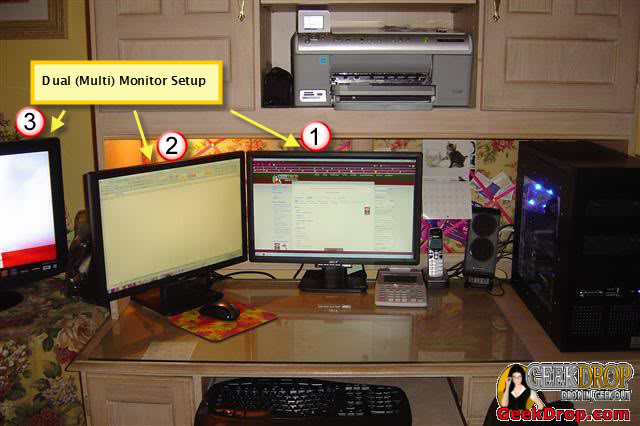
This is where I brag, I have 2 Acer 22" widescreens so I'm almost 4 ft. of monitors. The picture shows generally how you can find me, office work on the one side and play on the other. The nice part is say I have a large excel spread sheet - I can stretch it across both screens.
So how can you set up your monitors to go dual?
Well first thing you need to do is look on the back of your computer. When you look you will see one or more of these:

D-sub is an analog connection that you will find on most older computers. Most monitors nowadays still have D-Sub connections on them too.

DVI is digital and you will find this the standard on most computers nowadays. DVI is a much better connection than D-sub and is the preferred connection of the two for the main monitor, at least.
There are also HDMI (High Def) and Serial ports on some newer graphics cards.

HDMI is the best out of all choices. If you have an HDMI port on your graphics card, definitely use that one as your main monitor's connection, and use DVI as your second monitor's connection (if possible).
Now some computers will have it already set up for dual monitors. If you see this on the back you know you are:


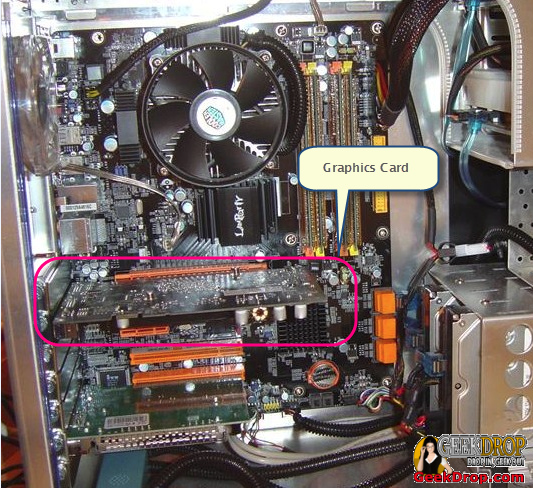
My tower has a video card in it (see pic on right) that allows dual monitors with 2 DVI hookups.
OK, so what if your tower doesn't have that? Does it mean you have to add a Video Card
 or
or 
With a second monitor its not a must to go DVI, you can use D-Sub, or any other connection type we mentioned and be just fine. If you get a USB graphics adapter you simply hook it up to your computer via USB and now you have two monitor hookups!
Now, once you have 2 different places to plug your 2 monitors into, simply hook up both monitors up, each into it's own port (plug). After you do that you'll need to go into your computer's display settings and you'll see this:
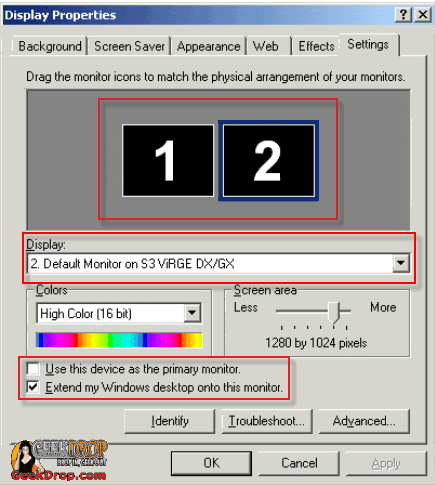
In Windows 7 it will look like this:

Now regardless which OS you are using you want to "identify" the monitors (see below) to make sure you know which is your main monitor, and which is your second, and you want to go to the advanced settings to make sure they're setup the way you want them to be - tweak the rest of the settings to your own needs.
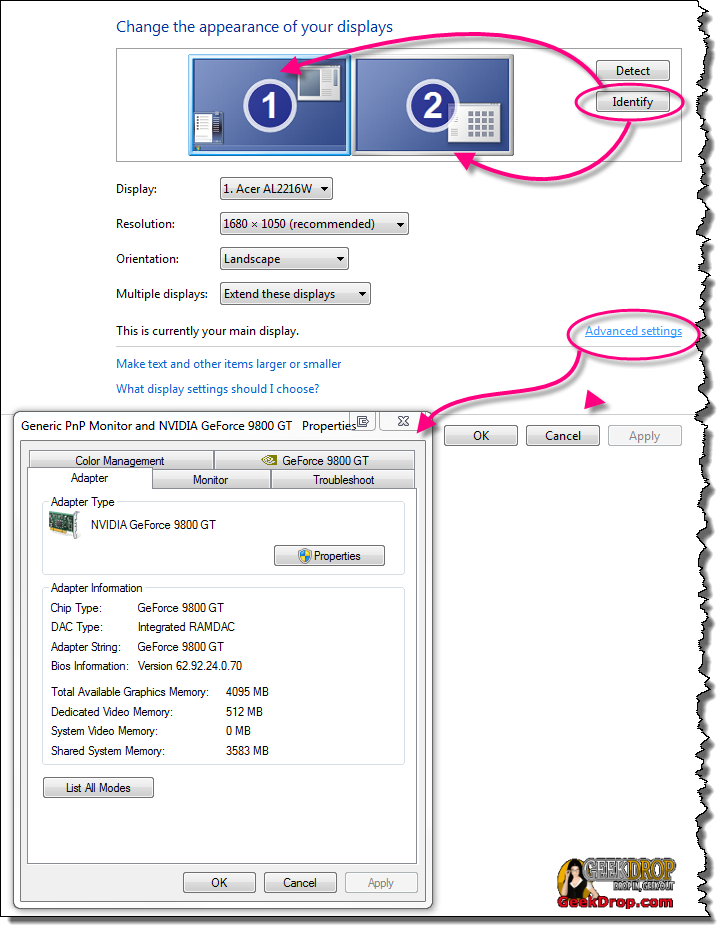

if it identifies them wrong, then simply switch the monitor cables in the back of the tower.
Now if you do decide to go dual monitors then let me let you in on an awesome program called Ultramon. It has a bunch of nice little features for multiple monitors (more then just duals but also triple and quad monitors as well). I use Ultramon and I love it! A few of the perks is the way it allows you to play with your wallpaper and screensavers (different wallpaper and screensavers for different monitors), but the best part is the buttons it adds to the top of each window, next to the normal Minimize / Maximize buttons:
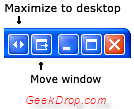
The click of one button and I can expand one monitor across both monitors so it acts as a single monitor, or I can pop that window off the current monitor and onto the other monitor. You can read more of the benefits of ultramon, and get it HERE.
If you have any more awesome tips, trick or hacks for dual monitors, please post and let us know! If you have any problems or questions setting them up, that's why we're here! Ask away and someone will help you! :D
Read More ...
yep your good to go - you just need a second monitor 

If your uber geekie you can get the IBM dual screen laptop
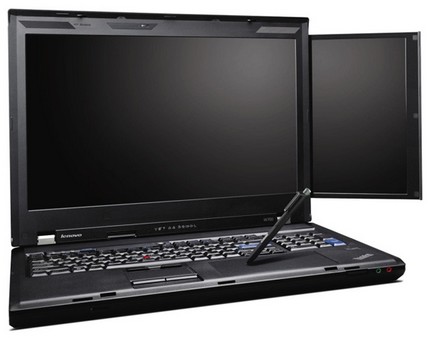
However you might need to take a loan out on that baby cuz it tis not cheap

BUT if you have a laptop you can take it one step more and go dual with that. Now you can do the full size monitor but lets face it laptops are portable and it would be nice to fold it up and place it in your laptop bag well you can....
Clicky on the pictures to see them on thinkgeek
oh and they work both windows and Apple

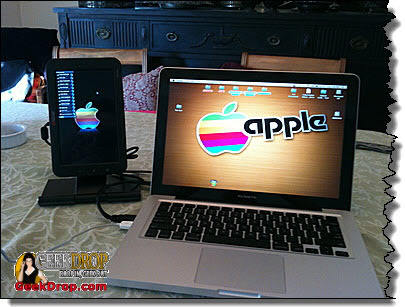
i think that would be pretty cool, cause then i can run one ubuntu desktop on one monitor, and another ubuntu monitor on another, it would be really awesome if i could kinda like seperate the controls for each, like have 2 mouses, each mouse works for its own monitor and each keyboard works for its own monitor, cause ubuntu has like this 2 dekstop thing where you can switch between current desktops, like switching windows accounts but faster like right now, if i switch from desktop 1 to desktop 2, desktop 2 is blank of any processes, like i just logged into it, and i would like to be able to make it like a second system i guess is the best way to put it, does anyone have any idea what i am talking about ?
I'm just guessing but I'm not sure ubuntu would do what you are talking about ! I use ubuntu and think you could extend desktop just like windows or Mirror you desktop ! I may be wrong ,but it seems the way it operates with the dual Desktop in ubuntu is for the purpose of being able to multitask your screens on ONE screen , but it may work if you try it if so let me know I'm curious !
Handy post! I really need to do this one of these days.
Wonder if anyone can help me with adding two ACER monitors to my Toshiba laptop. I'm running windows 10. I have one monitor connected through the serial port and the other is connected via DVI to HDMI Cable to the laptops HDMI
port. Windows 10 shows three screen options but I can only connect two at a time. I would like to have three apps running across the screens. Any suggestions?
Thanks


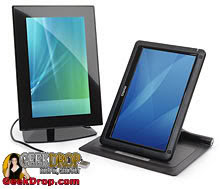
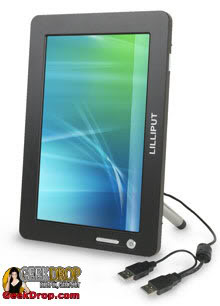






Pittsburgh, Pennsylvania
but its these instead
would that still work?
gφ┼hiç géΣk ¢Ωmpù┬é┌ ┌èPäï┌
~ÑìëßΓ~